Yes, you read that right.
Warning: Graphic images of placenta ahead.
When I was pregnant, the placenta — or rather, what to do with it post-birth — was a popular topic among my friends who already had babies or were expecting babies. Some had their placentas encapsulated. Most left them at the hospital. I was on the fence about mine: to eat or not to eat?
(For a good laugh, Google placenta recipes. They do exist! … for everything from placenta smoothies to placenta stew. A writer from The Guardian even made placenta tacos with his wife’s afterbirth.)
I’m not a particularly crunchy person, and the benefits of placenta encapsulation are anecdotal at best. But I’d read somewhere that burying a placenta was a common ritual in many cultures around the world, and that piqued my interest enough to look into the practice.
Turns out, the native Hawaiians do it. The Navajo Indians do it. The Indonesians, Cambodians, Costa Ricans, and Bolivians do it. The Maori do it, believing it reinforces the child’s bond with the land. (In fact, the Maori word for placenta, whenua, also means land.)
Though they all have their own special rituals involving burial of the “tree of life,” as the placenta is often called, the common thread among many of them was the act of linking past, present, and future — returning the remains to Mother Earth to nurture another life or protect the present life.
Clearly not everyone’s cup of tea, but a thoughtful tradition nonetheless to honor a birth as well as to enrich the earth.
When I pitched the idea to my husband, he thought I was joking at first, then he felt a little (or a lot) squeamish when he realized I wasn’t. The placenta nourished our child for nine months, I offered in defense, why couldn’t it continue to nourish another form of life?
After all, it wasn’t any different than planting fish heads in our raised beds, and my family was known for burying all kinds of kitchen remnants in their garden when I was growing up: shrimp shells, fish bones, fish guts.
This was essentially free fertilizer. With my placenta, I would know exactly where it came from — it was organic fertilizer at its purest. The idea of planting a placenta seemed unconventional, but it certainly wasn’t outlandish.
The hospital allowed us to take the placenta home after I gave birth. I simply signed a waiver stating I knew the risks of handling a biohazard, and the placenta was wrapped up and refrigerated during my hospital stay.
I thought it would be vacuum-sealed or wrapped in a biohazard bag, but quite the contrary — the nurse handed me the placenta, double-bagged in plastic the way the butcher at the Mexican market wrapped up a lump of meat. Surprising and comical, to say the least.
We placed the placenta in a cooler for the drive home, then refrigerated it for a few days until I was ready to deal with it.
First, I made a print of the placenta. If you’ve ever looked at one in person, you might notice the side that faces the fetus resembles a tree. The veins look like branches and the umbilical cord forms the trunk — this is how the placenta earned its moniker as the tree of life, and in many cultures and historical references, a tree of life is often associated with motherhood.
I laid down a dog training pad on the kitchen counter, spread the placenta out so that the fetal side was facing up, then gently pressed a sheet of bristol board over it.
It took a few tries, but the resulting imprint (yes, in blood) is a beautiful abstraction of a tree. It’s not as gory as it sounds, and one day, I’ll have it framed for Gemma’s room. I think she’ll appreciate learning what it is and how it came to be.
(Our friend’s kids actually saw the print shortly after I made it. We tried to explain what it was, but I think it’s a really strange and difficult concept for a five-year-old boy to wrap his mind around!)
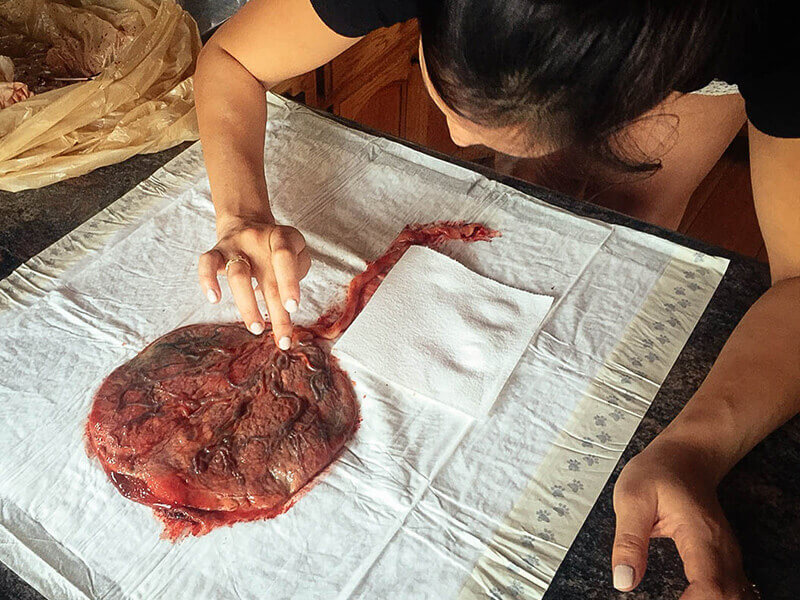
After making my art print, I double-bagged the placenta in Ziplocs and put it in the freezer until we figured out where to plant it. We were renting at that time, so we didn’t want to plant it out in the yard.
We knew that one day we’d move out of that house, and possibly out of California (update: we’re now in Oregon!), so we wanted to be able to take this memory with us. We wanted a tree that represented this stage in our lives and paid homage to Gemma’s California roots, one that could happily live in a container, perhaps indefinitely.
We eventually settled on a Moro blood orange tree. (A blood orange tree seems fitting, no?)
And so one afternoon, we prepped an 18-inch ceramic pot with a few inches of soil and placed the frozen placenta on top of it. We said a few words of gratitude, covered the placenta with several more inches of soil, and finished potting up the orange tree.
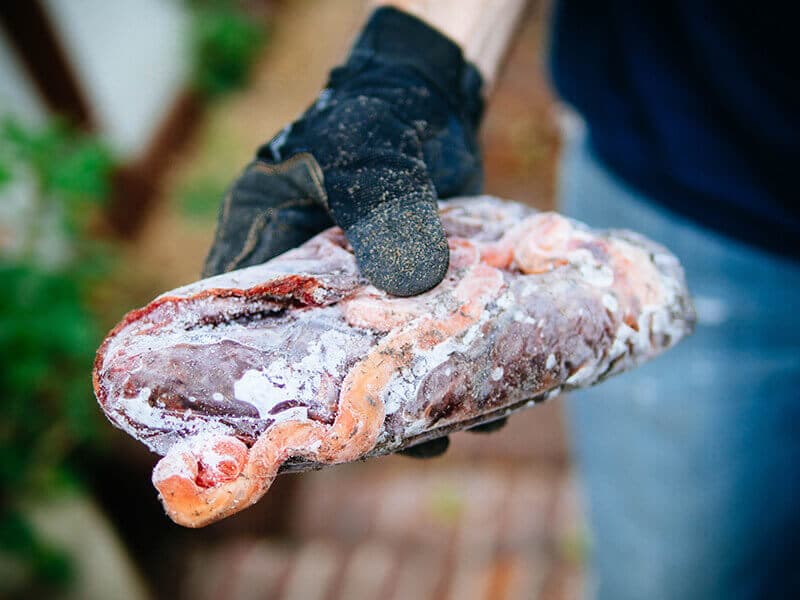
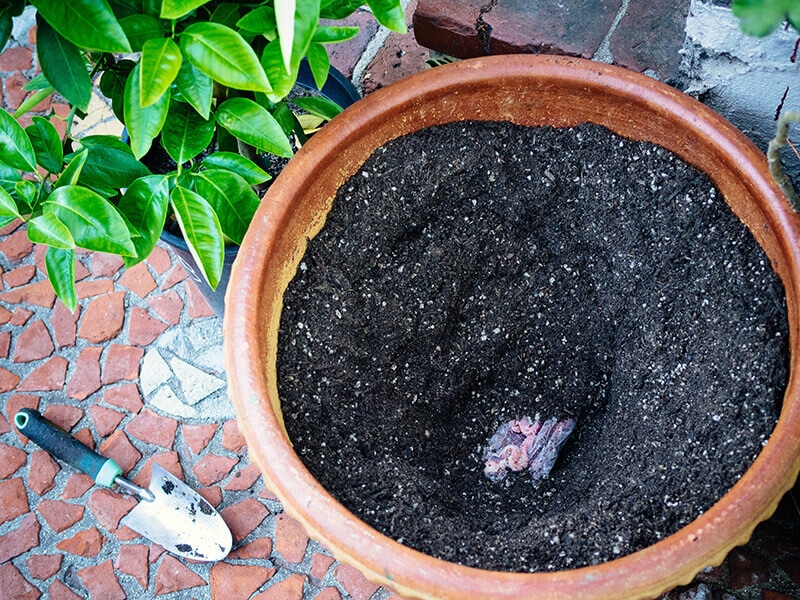
It hung out in our courtyard with all the other container citrus, and has been thriving the past couple years. We can’t wait for the day it starts blooming!
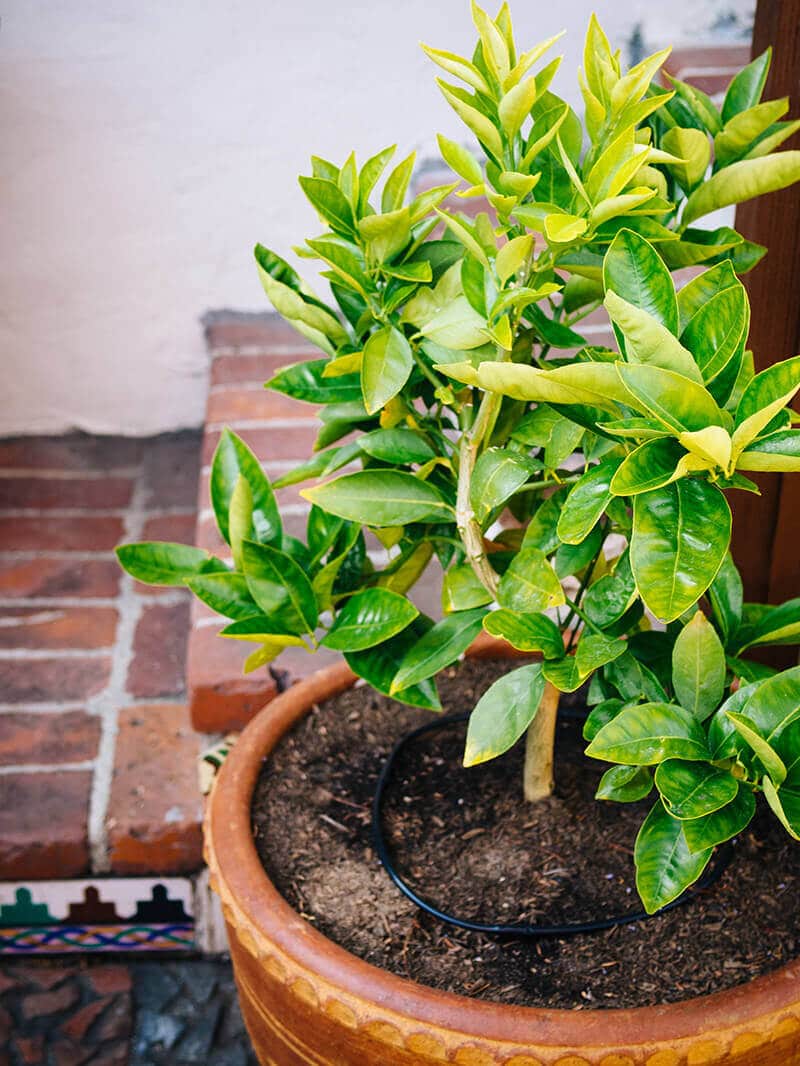
Want to see what this orange tree looked like after 18 months? Here’s my update!


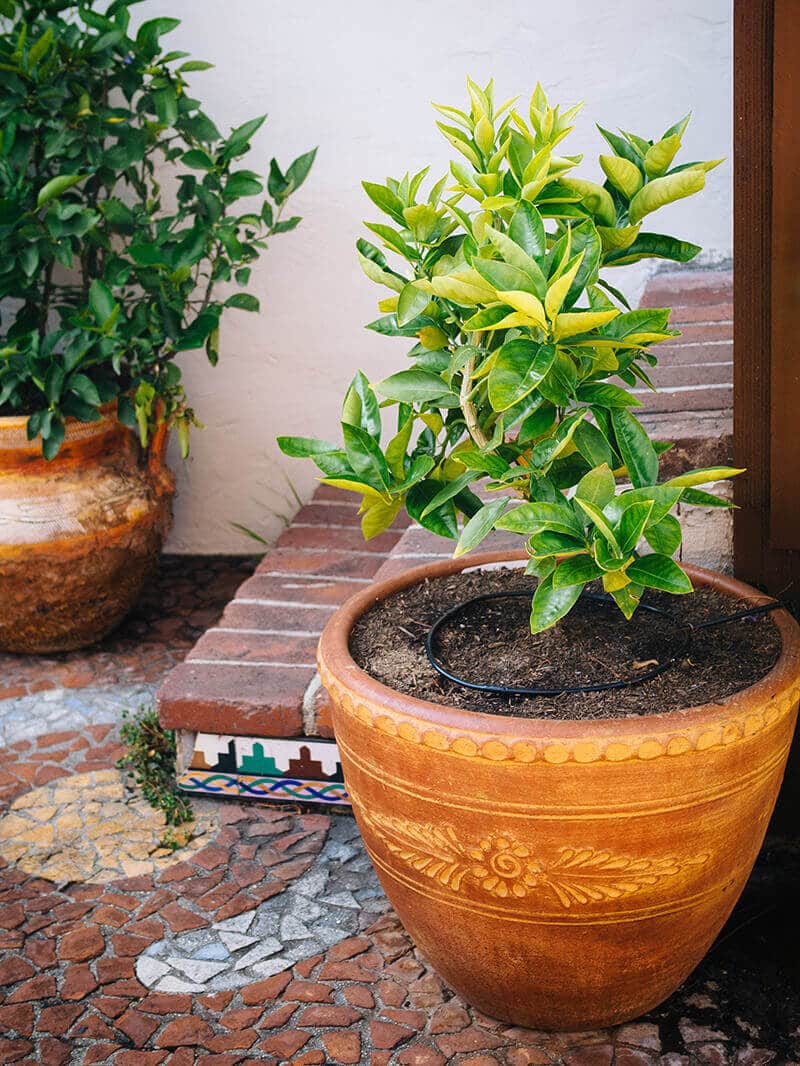













I still haven’t buried mine but it is frozen. I had know Idea about the placenta resembling a tree. I think it’s absolutely beautiful that you made a print of yours. Carrying a baby is such an intense journey, from the time you find out you are expecting too the moment your baby leaves your body. I love the act of returning back to the earth what our own bodies produced too nourish and sustain the blessed life bestowed upon us. A great honor and privilege to carry life. This is a beautifully emotional act of gratitude deeply rooted in thanks and remembrance.🧡
I hope you find a beautifully meaningful place to bury yours! It truly is a wonderful experience.
Was there any smell associated with this? Any insects or critters attracted to any of those smells?
The Malays do this as well( burying the placenta in the garden)
So even though we were thousands of kilometres from our homes in Europe and Asia we decided to bury ours in the garden of our rental home in the desert of Doha( we couldn’t transport it out of country)
i had the best garden in town… After Mass on Sunday everyone would ask me if they could come to my garden and pick just one tomato because it was so huge and juicy and delicious it would last them all week. Well my mother told me it would be the best place to grow a garden because my grandfather would take a bucket of afterbirth( they said) and plant it there. He had 15 children at home and his daughter had 17 and on and on. So I did since it was now my backyard. That was the old days for sure. But I bet it still works and no one got sick… The good old days. Actually everything grew magically… corn, green beans, radishes, cucumbers etc. I still believe it was because of my grandfather and all those buckets!
Wow! Well, it sounds like he had enough organic fertilizer to last for decades! 🙂
I am not sure I would want to eat mine, even though I have eaten so many weird things in my life… but then, it’s all about convention and what we are used to and what not. I would not oppose to having it buried somewhere to nourish the land but it would have to be VERY deep for the local foxes not to dig it up.
I can see how critters could be an issue with any organic matter dug into the soil. Luckily, we never had any problems with the placenta in our pot.
Maybe your climate is drier so it doesn’t decompose so quickly. Anyway, how is the blood orange tree doing?
I’m on the coast, so we tend to have some fog. But we (in SoCal) certainly don’t have the humidity of the east coast. The blood orange tree is doing great! I’ll post an update on it soon.
Congratulations! And thank you for sharing!! Would love to see the print, if you feel like sharing that piece. <e
I love that you prefaced this with “I’m not very crunchy”. I’ve heard of doing something with the placenta, but never this! I’m intrigued and would love to hear more about the tree (it’s always nice to have requests for more blog posts, right?). And I love the blood orange tree for the recipient!
It’s been six months since I planted the placenta, and the tree has been thriving! I’ll definitely post an update. 🙂
Could you update the status of the tree!? Did you notice a difference from the other plants!?
Yes, I will definitely post an update! But it’s hard to say how much of an affect the placenta had on the tree, since I regularly fertilize all my citrus trees with compost tea.
Thought I’d circle back to this comment, one year later, and mention that the blood orange tree is thriving! You can see it in my recent Spring 2017 video tour of my garden: http://gardenbetty.com/2017/05/video-my-spring-2017-garden-tour/ (it’s at 1:31 into the video).
I’m an Indonesian and I had mine (and all of my family members’) buried. Mine was in my grandparents’ house. They used to have soil floor so my placenta was planted inside the house. But it’s now been topped with tile floor. We have many superstitions and one of them is to bring a little bit of soil and put it under our new bed when we move faraway. My grandparents dug some soil near where my placenta was buried and told me to bring it with me when I went to college five years ago. Kinda silly. But they insisted that it can prevent homesick. I wasn’t homesick, but it may be because I just love the new freedom than something else.
It sounds like a sweet family tradition, even if you don’t believe in it. 🙂
Wow that is really special. I wish I had thought of that! I just had my first five months ago.
Well, I was able to wrap my head around this, probably because of my Native American roots. However, the placental tree roots are way back in the annals of our history and I couldn’t find a living relative or a written remembrance of placental practices. And, with my own birthing experiences, I considered myself lucky to have had a midwife assisted delivery, albeit medically trained midwife–so they probably weren’t in touch with that practice. We didn’t even save “cord blood” it was so long ago. Kudos to you for fulfilling your dream!
Oh.my.goodness. Totally cool with you doing your thing with it – but the EATING? Where does one draw the line about what human flesh to eat or not? Not even at the point where I can laugh at that…
I think this is such a beautiful way to honor your time with your daughter en caul. I grew up with miniature donkeys and we always had to bury their placentas or else a scavenger would dig them up or smell them. Wondering the same as “Some Dude” below, if this will be a problem. I hope not! Fruit from that tree would be very special.
Loving this. Hopefully people who are all weird about it won’t post their opinions.
I never planted anyone’s placenta, but I used to do the meat/animal scrap thing to excellent effect. I’m a little ambivalent about is the use of the container, though: I never did that. I was worried about the residue of decaying flesh dripping from the bottom and becoming a health hazard, attracting flies, or just smelling badly. You should let us know if anything like that becomes an issue over the next few months.
It’s been 6 months since I buried the placenta, and I’m happy to report the tree is doing wonderfully. We’ve had no issues as far as odor or drips, nor has it attracted any more critters at night than we normally get. I can only assume it’s decomposed naturally by now. So in my experience, I don’t think it would be any different than burying a fish head in a container; you just have to make sure you choose a large enough container for whatever meat scrap you use.
I wish I had planted mine. It is a beautiful and meaningful tradition.
Fascinating! I wish I had done the same with my girls’. My sister did plant her youngest’s (#3) placenta under a Maple tree in my father’s yard – since they weren’t quite settled in a home at the time. Thank you for sharing! 🙂 Way cool!
I guess you’d call me crunchy and I see/have no qualms about either planting or eating the placenta! My friend planted hers beneath a pine tree in her backyard that was ALWAYS a runt. It shot up like crazy after she planted it 😉
Perhaps because ours is confined to a pot, but the tree hasn’t really shot up – though it’s doing extremely well and has grown a few inches all around since we planted it! I have no doubt it would’ve been great for an in-ground tree.